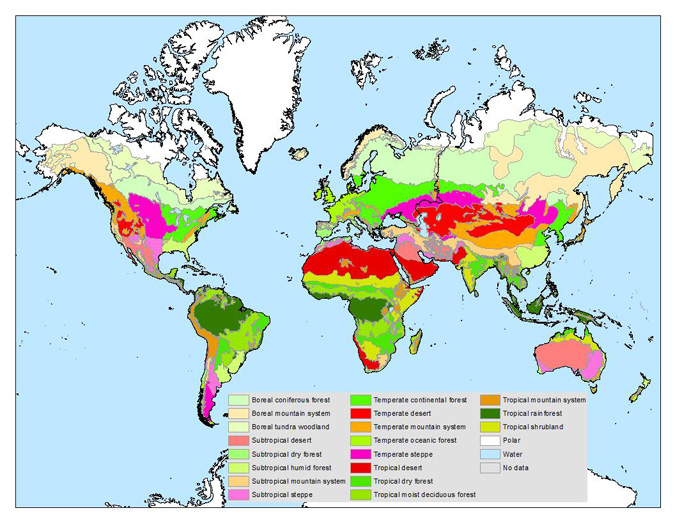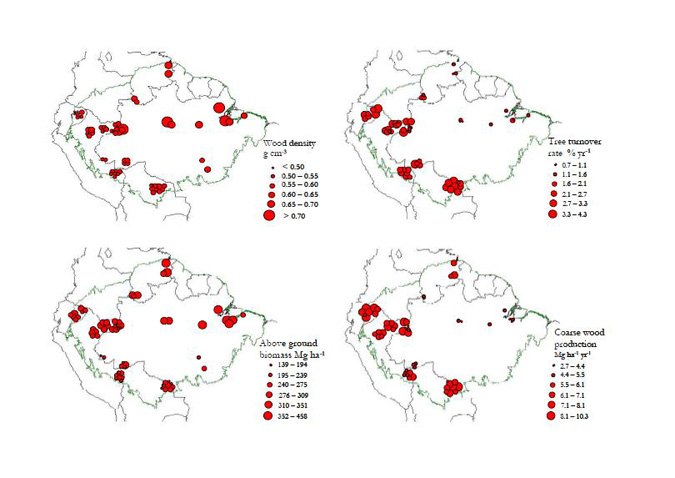
Full text loading...
Forests are the dominant terrestrial ecosystem on Earth. We review the environmental factors controlling their structure and global distribution and evaluate their current and future trajectory. Adaptations of trees to climate and resource gradients, coupled with disturbances and forest dynamics, create complex geographical patterns in forest assemblages and structures. These patterns are increasingly discernible through new satellite and airborne observation systems, improved forest inventories, and global ecosystem models. Forest biomass is a complex property affected by forest distribution, structure, and ecological processes. Since at least 1990, biomass density has consistently increased in global established forests, despite increasing mortality in some regions, suggesting that a global driver such as elevated CO2 may be enhancing biomass gains. Global forests have also apparently become more dynamic. Advanced information about the structure, distribution, and biomass of the world's forests provides critical ecological insights and opportunities for sustainable forest management and enhancing forest conservation and ecosystem services.

Article metrics loading...

Full text loading...


Data & Media loading...
Supplemental Material
Download all Supplemental Material as a single PDF. Includes Supplemental Figures 1-2 (also reproduced below), Supplemental Table 1, and Supplemental Texts 1-2. Supplemental Figure 1: The map of the FAO Global Ecological Zones, including 22 classes overall and 13 forest classes (FAO 2001). Supplemental Figure 2: Patterns and relationships of ecosystem properties across the landscape of the Amazon Basin (Quesada et al. 2011). 

